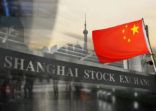“Equities deliver the best risk-reward ratio among all asset classes in China,” Luo Jing, senior fund manager at Value Partners, said in a recent media briefing.
“The main reason is the country’s strong economic resilience. And there is tremendous potential from industrial and consumption upgrades. That will still be the major theme driving our investment in the Chinese A-share market,” he added.
Luo believes that if the trade dispute blows up into a full-scale war – which is the worst case scenario – China’s GDP should still grow at about 5.5% a year.
Investors can best take advantage of the country’s favourable outlook by investing in A-shares, he argued.
“A-share valuations are cheap, both relative to their historical averages and compared with bond yields,” said Luo.
“Moreover, on a comparative basis, A-shares are cheaper than the MSCI China index [which mostly comprises foreign-listed China shares], emerging markets, and other Asian countries, such as Thailand and Malaysia, in terms of both price-to-earning ratio and price-to-book ratio,” he said.
The A-share price-to-earnings ratio is 10 and price-to-book ratio is 1.1, while the multiples for the MSCI China index are 12 times and 1.5 times respectively, and for the MSCI Emerging Market index, the multiples are 13 times and 1.5 times respectively, according to Value Parters data.
Luo is sector agnostic: his process is bottom-up stock selection,”so underweight and overweight sector positions are only the result of our individual stock picks,” he said.
“As a result, we are overweight financials – especially banks – property, healthcare, and construction. We are underweight consumer and cyclical sectors,” he added.
Index inclusion & A shares
“Index inclusion is clearly also an important factor that will drive the A-share market,” said Luo.
MSCI just completed the second step in its three-step process of China A-share inclusion in the MSCI Emerging Markets Index. On 27 August, the inclusion factor increased to 15% from 10%, putting China A-shares’ weight in the MSCI Emerging Market Index at 2.5%. In November, their weighting will reach 4%.
“After the November’s inclusion, our rough estimation is there will be around RMB600bn ($84.5bn) of inflows from overseas,” Luo said.
“That might be a conservative figure, because we don’t calculate actively managed inflows,” he added.
FTSE Russell plans to increase its A-share inclusion factor to 15% from 5% in its global indices, and S&P recently released a list of A-shares to be included in its emerging market index, building momentum for passive inflows.

















